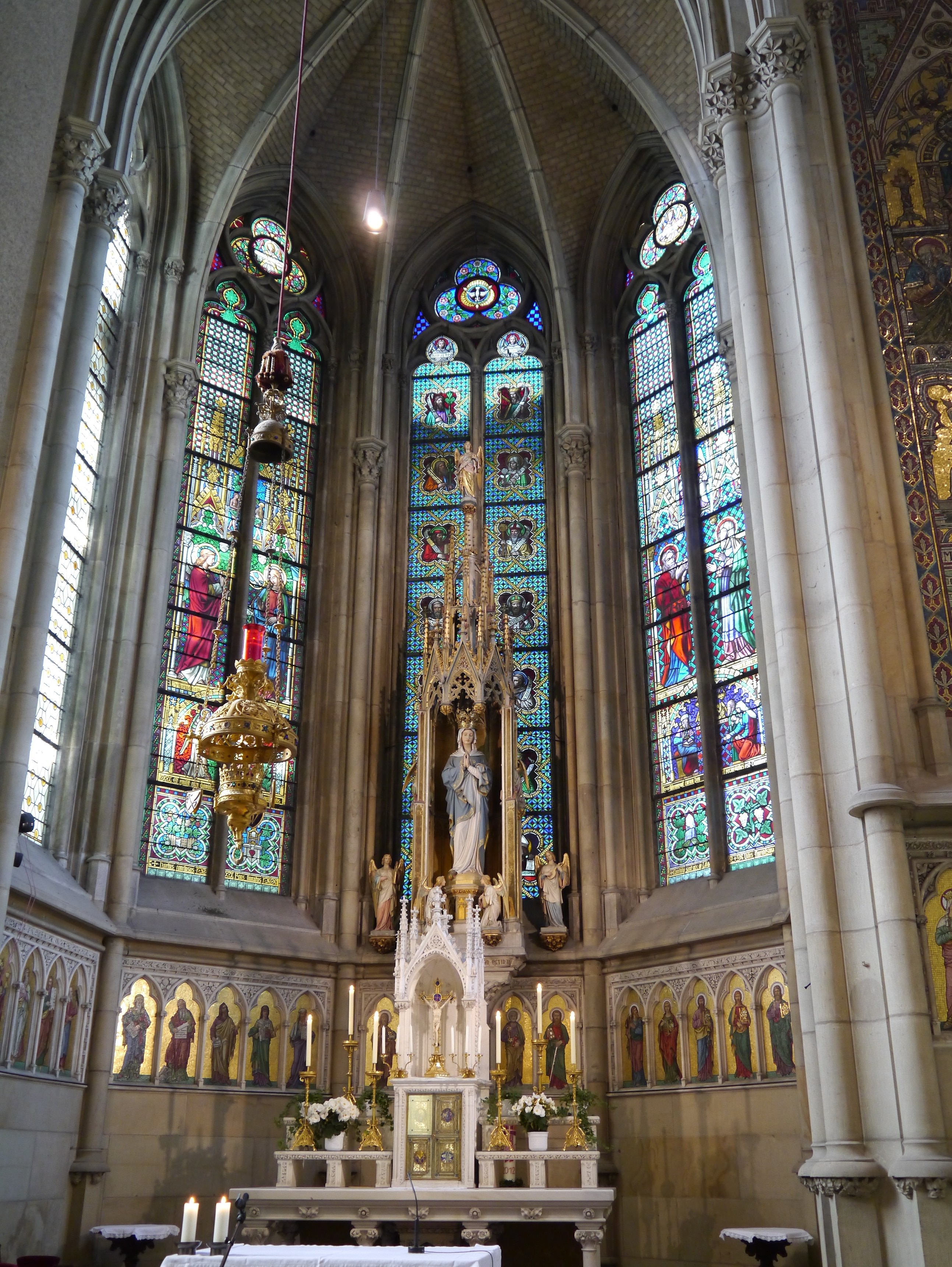Locus Iste on:
[Wikipedia]
[Google]
[Amazon]
 is the
is the
''Locus Iste''
(video); Libera Official, 2009 (Youtube).
''Locus Iste''
(''Visions''; music); Libera Official, 2016 (Youtube).
''Locus Iste''
by Libera (lyrics & translation); Youtube, 2016. {{Portal bar, Classical music Christian hymns in Latin
Latin
Latin ( or ) is a classical language belonging to the Italic languages, Italic branch of the Indo-European languages. Latin was originally spoken by the Latins (Italic tribe), Latins in Latium (now known as Lazio), the lower Tiber area aroun ...
gradual
The gradual ( or ) is a certain chant or hymn in liturgical Christian worship. It is practiced in the Catholic Mass, Lutheran Divine Service, Anglican service and other traditions. It gets its name from the Latin (meaning "step") because i ...
for the anniversary of the dedication of a church (), which in German is called .Cornelis van Zwol, ''Anton Bruckner 1824-1896 - Leven en werken'', Thoth, 2012, p.706 The incipit
The incipit ( ) of a text is the first few words of the text, employed as an identifying label. In a musical composition, an incipit is an initial sequence of Musical note, notes, having the same purpose. The word ''incipit'' comes from Latin an ...
translates to "This place was made by God". One of the most famous settings is by the Austrian composer Anton Bruckner
Joseph Anton Bruckner (; ; 4 September 182411 October 1896) was an Austrian composer and organist best known for his Symphonies by Anton Bruckner, symphonies and sacred music, which includes List of masses by Anton Bruckner, Masses, Te Deum (Br ...
.
Text
The text is based on the Biblical story ofJacob's Ladder
Jacob's Ladder () is a ladder or staircase leading to Heaven that was featured in a dream the Biblical Patriarch Jacob had during his flight from his brother Esau in the Book of Genesis (chapter 28).
The significance of the dream has been de ...
, Jacob's saying "Surely the Lord is in this place; and I knew it not" (), and the story of the burning bush
The burning bush (or the unburnt bush) refers to an event recorded in the Jewish Torah (as also in the biblical Old Testament and Islamic scripture). It is described in the third chapter of the Book of Exodus as having occurred on Mount Horeb ...
where Moses is told "put off thy shoes from off thy feet, for the place whereon thou standest is holy ground" ().
A translation closer to the Latin is:
Plainchant
The plainchant of the gradual appears in theLiber Usualis
The ''Liber Usualis'' (''Liber Usualis missæ et officii pro Dominicis et festis cum cantu Gregoriano'' or "Book for Use at Masses and Offices of Sundays and Feasts with their Gregorian Chants") is a liturgical book of commonly used Gregorian c ...
at p. 1064 of the 1924 edition (modern notation) and p. 1251 of the 1961 edition (chant notation) and also in the Graduale Novum on the p. 379.
Bruckner's setting
Bruckner completed the motet for unaccompaniedSATB
In music, SATB is a scoring of compositions for choirs or consorts of instruments consisting of four voice types: soprano, alto, tenor and bass.
Choral music
Four-part harmony using soprano, alto, tenor and bass is a common scoring in classic ...
choir in 1869 for the dedication of a votive
A votive offering or votive deposit is one or more objects displayed or deposited, without the intention of recovery or use, in a sacred place for religious purposes. Such items are a feature of modern and ancient societies and are generally ...
chapel at the New Cathedral in Linz
Linz (Pronunciation: , ; ) is the capital of Upper Austria and List of cities and towns in Austria, third-largest city in Austria. Located on the river Danube, the city is in the far north of Austria, south of the border with the Czech Repub ...
. The motet is often performed on anniversaries of church dedication. The piece, which takes about three minutes to perform, is in the key of C major
C major is a major scale based on C, consisting of the pitches C, D, E, F, G, A, and B. C major is one of the most common keys used in music. Its key signature has no flats or sharps. Its relative minor is A minor and its parallel min ...
and in common time
A time signature (also known as meter signature, metre signature, and measure signature) is an indication in music notation that specifies how many note values of a particular type fit into each measure ( bar). The time signature indicates the ...
.
References
External links
*Libera (choir)
Libera is an all-boy English vocal group founded by the late Robert Prizeman. Libera performs concerts in many countries, including the UK, the US and throughout Asia, and often makes recordings for their own album releases and other projects. ...
:
''Locus Iste''
(video); Libera Official, 2009 (Youtube).
''Locus Iste''
(''Visions''; music); Libera Official, 2016 (Youtube).
''Locus Iste''
by Libera (lyrics & translation); Youtube, 2016. {{Portal bar, Classical music Christian hymns in Latin